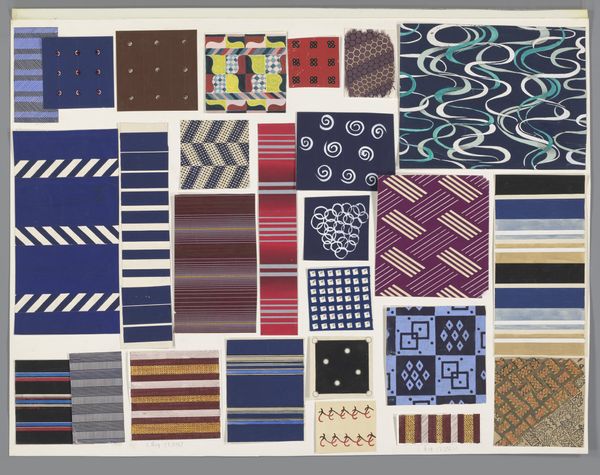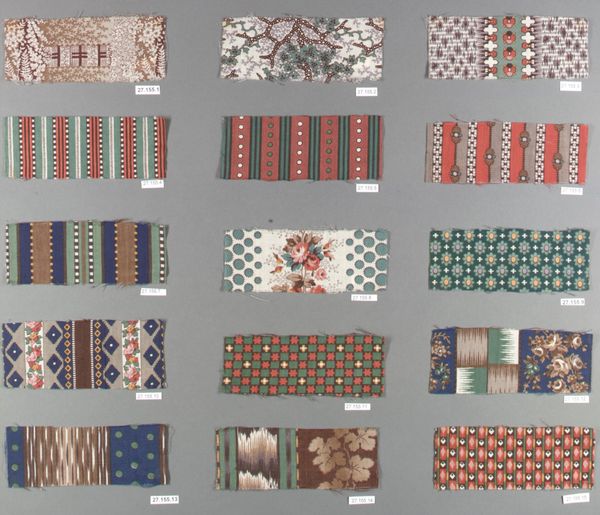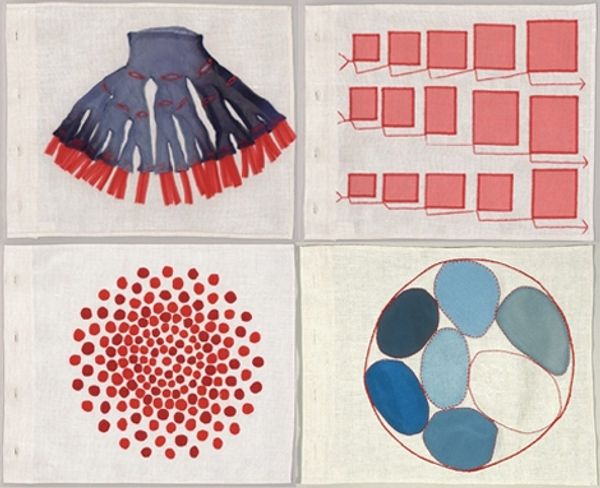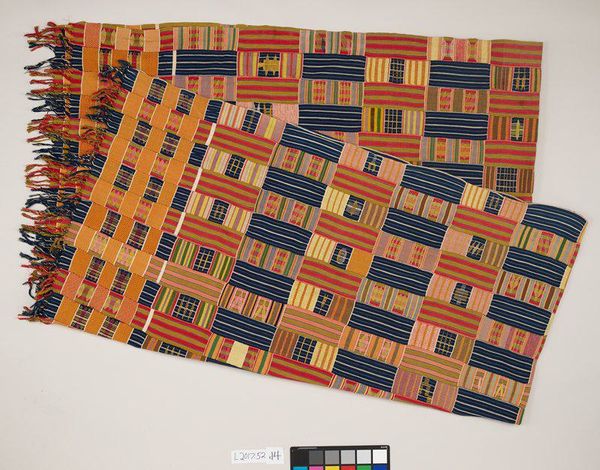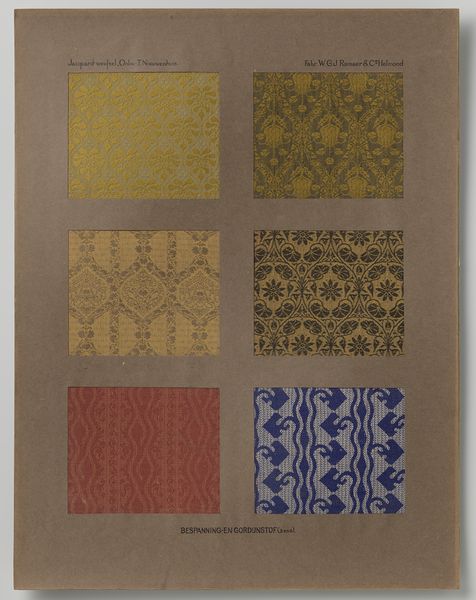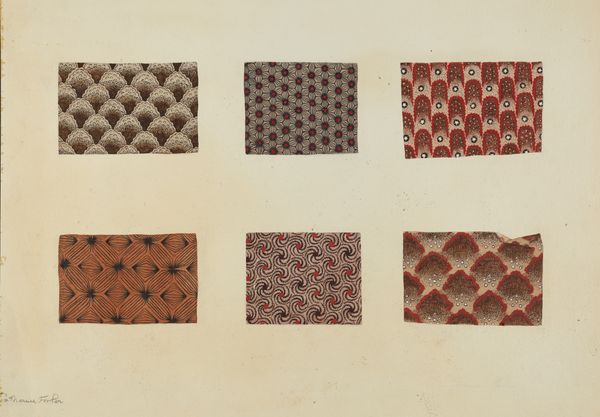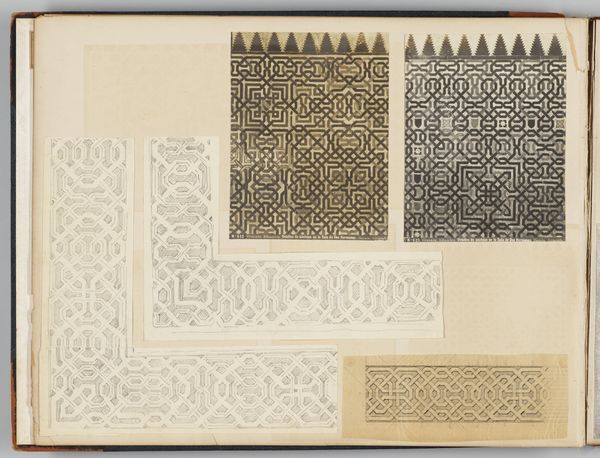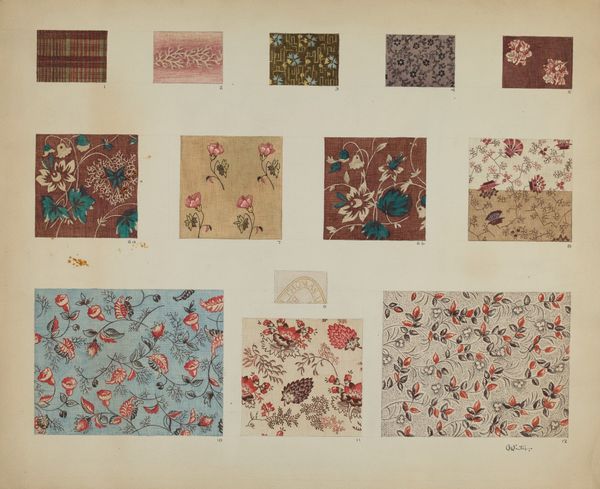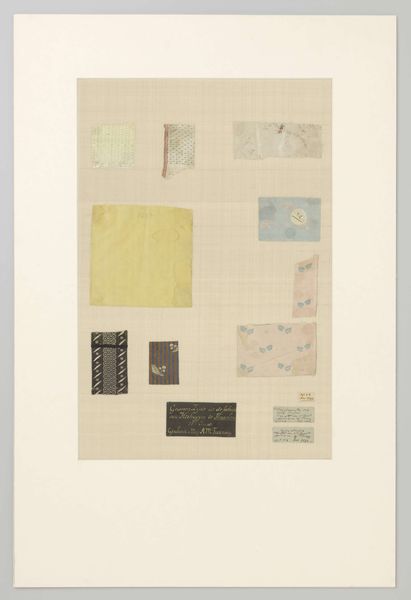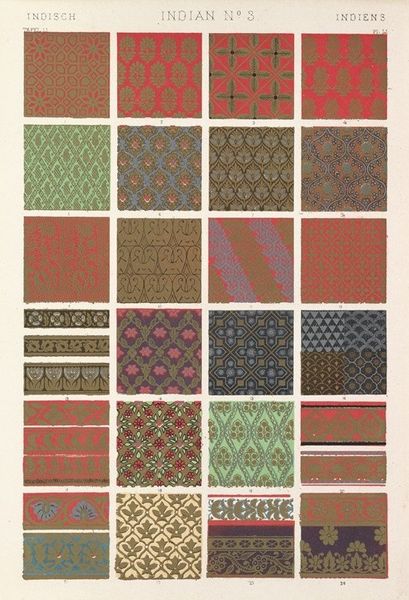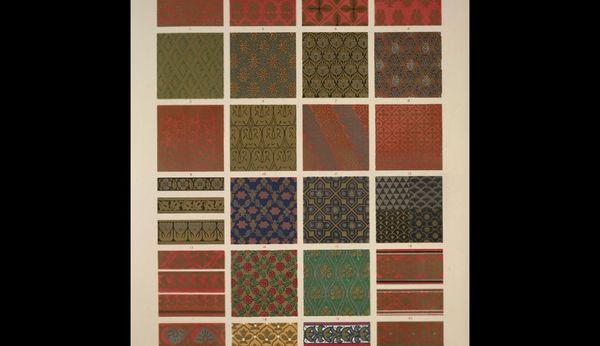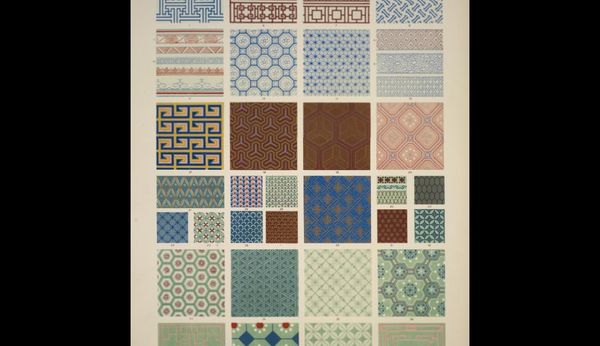
silk, textile, paper
#
fashion design
#
underwear fashion design
#
silk
#
fashion mockup
#
textile
#
collage layering style
#
fashion and textile design
#
paper
#
fashion based
#
geometric
#
clothing theme
#
geometric-abstraction
#
clothing photo
#
textile design
#
decorative-art
#
clothing design
Dimensions: height 647 mm, width 492 mm
Copyright: Rijks Museum: Open Domain
Curator: Here we have a fascinating textile artwork. It's titled "26 Ontwerpen voor zijden stoffen," or "26 Designs for Silk Fabrics," dating from around 1930 to 1950, by an anonymous artist. Editor: My immediate impression is one of organized chaos. There are so many patterns vying for attention, it feels both meticulously planned and incredibly diverse in material execution. Curator: Indeed. Considering the era, this collection speaks volumes about the evolving landscape of textile production. It's a showcase of design possibilities intended for commercial applications in the mid-20th century, reflective of changing tastes and technologies in the fabric industry. The absence of a known creator also highlights how design work in the textile industry was frequently collaborative or anonymous. Editor: The collage and mixed media elements really bring the designs to life. You can see how various materials might behave and interact. I’m curious about the source of the materials; are these scraps from mills, or samples created specifically for this presentation? That impacts how we see the artist's labour within a larger industrial machine. Curator: That’s an important question. It's difficult to pinpoint the exact origin of the components without more in-depth material analysis. What stands out is how varied styles and social factors are interwoven in the collection, offering glimpses into post-war consumer culture. The very act of collaging and combining various techniques echoes how artists during this time often blurred boundaries between high art and commercial design. Editor: Right. These designs weren’t necessarily conceived in a vacuum; the aesthetic choices were definitely influenced by popular motifs of that time. Considering these fabrics might have ended up as clothing, upholstery, or even accessories, their cultural impact extends far beyond a museum wall. How each piece functioned for people is a really important context. Curator: Precisely. These pieces showcase a visual language reflective of contemporary design, but ultimately, it embodies cultural values regarding utility, labor and the ever-shifting position of anonymous labor that produces so many aspects of the visual world that we take for granted today. Editor: Looking closely, it's rewarding to appreciate the artistry embedded within mass-producible textiles. It really makes one reflect on the relationship between art, commodity, and the hand. Curator: Absolutely. Thank you for providing that more tactile way of relating to these textiles and what it implies about social, cultural and commercial elements surrounding this image.
Comments
No comments
Be the first to comment and join the conversation on the ultimate creative platform.
